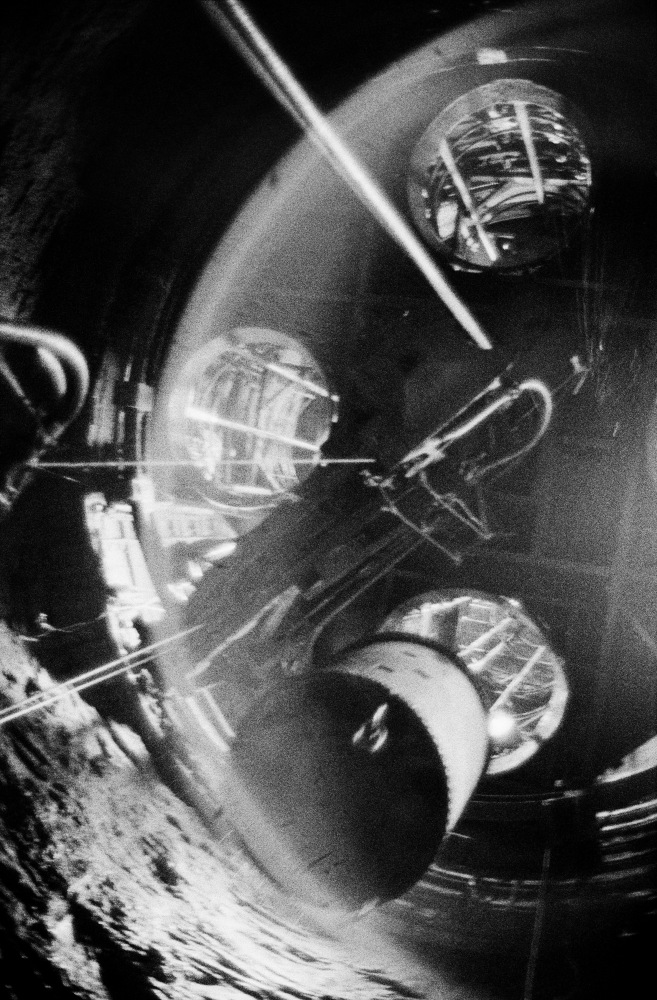Paris Photo
Grand Palais Ephémére, Champs de Mars, Paris
10 - 13 November 2022
Head-Image
This year at Paris Photo, Goodman Gallery brings a selection of work by Hasselblad award-winners Alfredo Jaar and the late David Goldblatt.
The presentation includes a selection of rare vintage prints from Goldblatt's iconic photographic essay, On the Mines, and from Jaar's Gold in the Morning lightboxes.
Throughout their careers, Jaar and Goldblatt have explored significant social and political issues. For Jaar, this has included genocide and the displacement of people across borders. For Goldblatt, a chronicle of the people, structures and landscapes of South Africa from 1948 until his death in June 2018.
David Goldblatt
“Water rains ceaselessley onto the shaft bottom which consists of jagged heaps of loose rock flung up by the previous blast. Fifty feet above is the only illumination: four lamps fixed to the underside of the stage. The stage hangs, six stories and eighty tons of steel, on ropes from the surface. As the shaft deepens, the stage will be lowered further. On it work the men who line the shaft with concrete and fit it out for the gold mine it is to serve.”
- From David Goldblatt’s 1972 essay in On the Mines, Steidl, 1973 & 2012
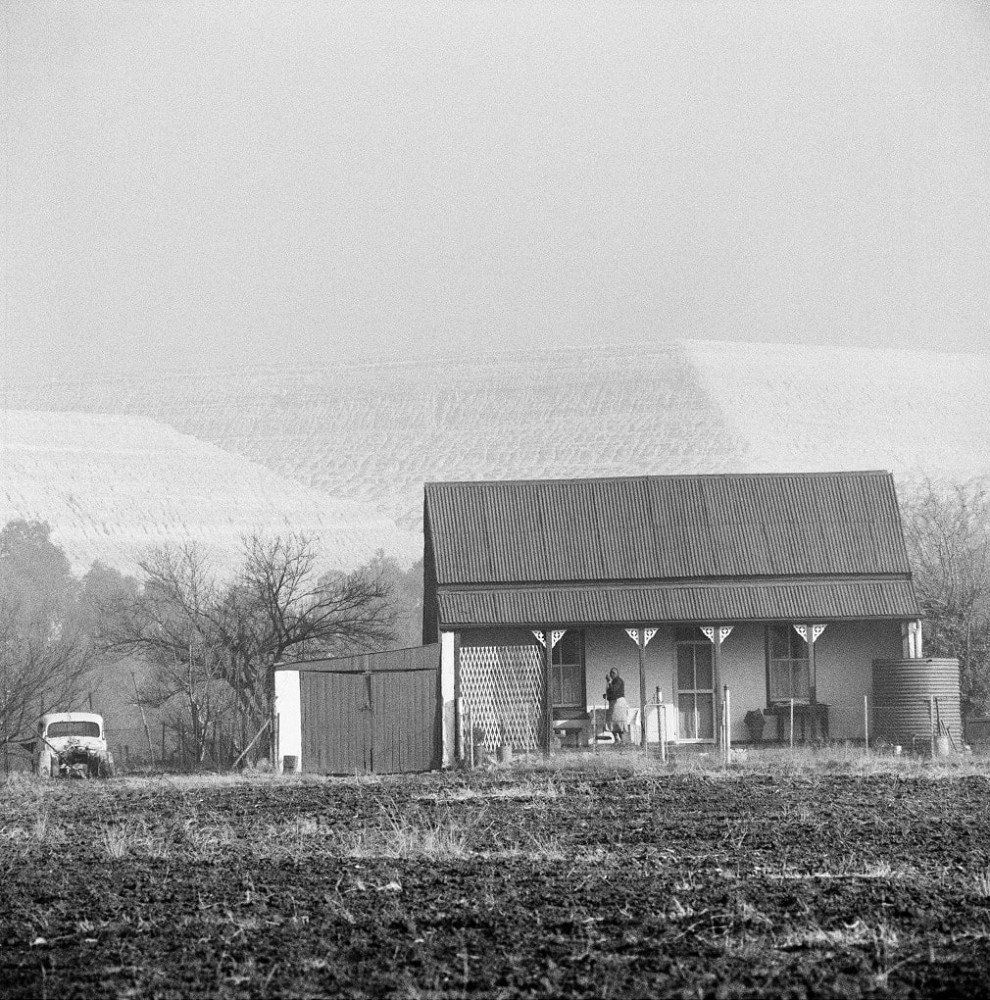
David Goldblatt
Miner's cottage and slimes dump, New Modder Gold Mine, Benoni, August, 1965
Silver gelatin print on board
Image: 21.7 x 27.7 cm
Frame: 55.7 x 45.5 cm
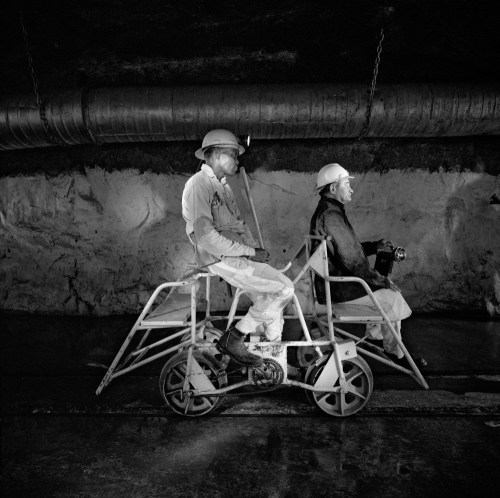
David Goldblatt
Team leader (left) and mine captain (right) on a pedal car, Rustenburg Platinum Mine, Rustenburg, 1971
Silver gelatin hand print
Image: 27.4 x 36.3 cm
Frame: 54 x 45.2 cm
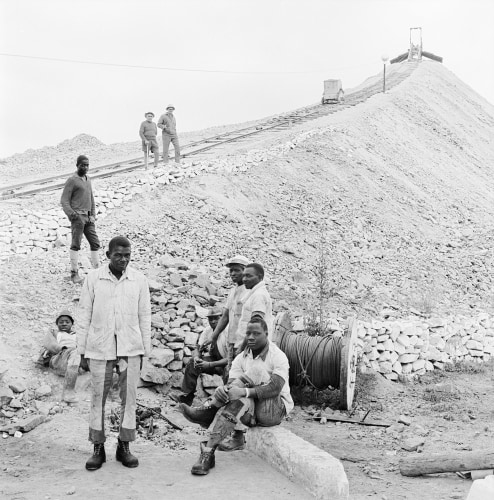
David Goldblatt
Gang on surface work, Rustenburg Platinum Mine, Rustenburg, 1971
Silver gelatin hand print
Image: 24 x 24 cm
Frame: 41.8 x 41.9 cm
“On nine farms in Africa in 1886 there began gold mining operations that were to produce great riches and political and economic power that would outlive the deposit of ore and the individual lives of successive generations of men who mined it. There also began a way of life shaped by the nature of the work to be done, the relationship of the strangers who came together to do it, and the blankness of the place on earth where they found themselves.”
- From Nadine Gordimer’s 1968 essay in On the Mines, Steidl, 1973 & 2012.
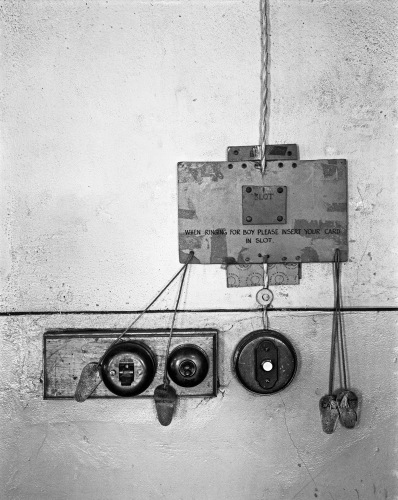
David Goldblatt
Call system used by officials at a mine office when they wanted the services of 'the boy'. Consolidated Main Reef Gold Mine, October 1967
Silver gelatin hand print
Image: 36.9 x 29 cm
Frame: 46.8 x 54.7 cm
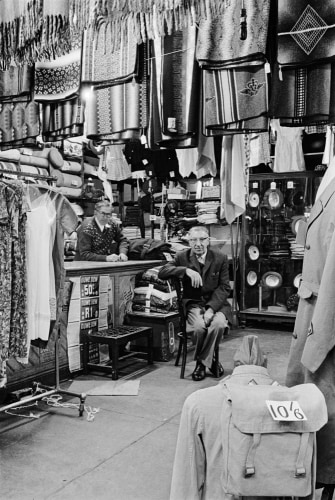
David Goldblatt
Concession Store Keepers, Rose Deep Gold Mine, Germiston, 1966
Silver gelatin hand print
Image: 34.9 x 23.3 cm
Frame: 41 x 52.8 cm
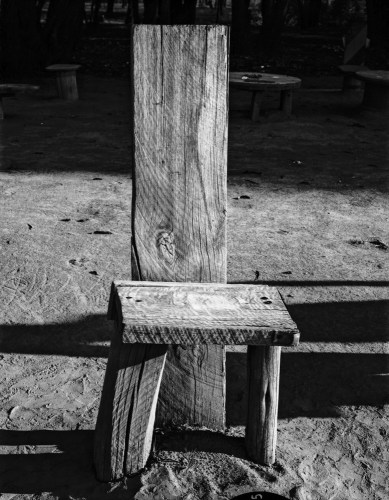
David Goldblatt
A barber’s chair of mining timbers, outside a compound on the Luipaardsvlei Estates,
Krugersdorp, 1965
Silver gelatin hand print
Frame: 43.5 x 50.6 cm / 17.1 x 19.9 in.
Alfredo Jaar
Serra Pelada is an opencast mine, a prodigious pit dug by human hands, the result of a massive influx of self-employed miners to a remote part of northeastern Brazil. The promise of gold lured more than 80 000 garimpeiros from their homes and families, to a life of arduous labour in hazardous conditions. In 1985 Alfredo Jaar traveled to Serra Pelada, and over the course of weeks, he documented these miners and their backbreaking work in the mammoth crater. It was on these bare, muddy, terraced slopes that Jaar photographed and filmed what was to become Gold in the Morning.
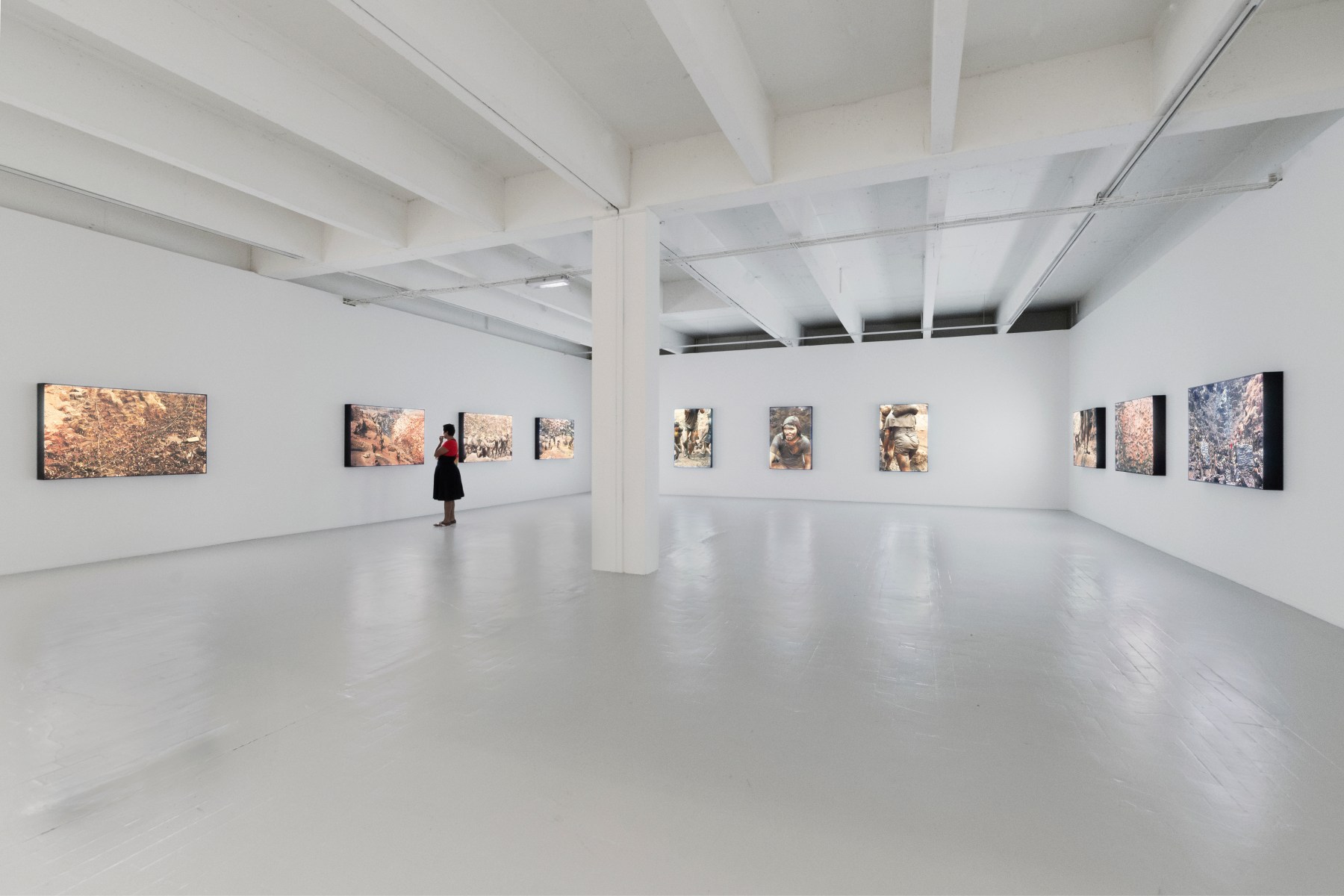
Gold in the Morning A-I (set of ten lightboxes), 1985. Lightbox with colour transparency, Work (each): 102 x 153 x 15 cm, Unique + 1 AP. Enquire for full set
The resulting images are a stark portrayal of Promethean repetition; the treacherous, daily descent of the men down the slippery walls and the clambering back up, laden with sacks of sodden earth. Beyond the graphic representation of their toils, the works reveal the humanity of the miners and their suffering. Jaar provides a portal into a hidden and unfamiliar place, dramatic in its scale and topography. In giving ‘visibility to those our world denies it to’, Jaar invites us to examine the social, cultural and political motivations for their labour. This illuminated installation counter balances the great, faceless demand of the industrialised world with a profusion of faces: the faces of those, in the developing world, who supply.
Jaar is known for his uncompromisingly frank documentary imagery, as well as his public interventions. He describes himself as a project artist, preferring to spend extended periods in the field, rather than being sequestered in a studio. He explains, “I do not create my works in the studio. I wouldn’t know what to do. I do not stare at a blank page of paper and start inventing a world coming only from my imagination. Every work is a response to a real-life event, a real life situation.”

